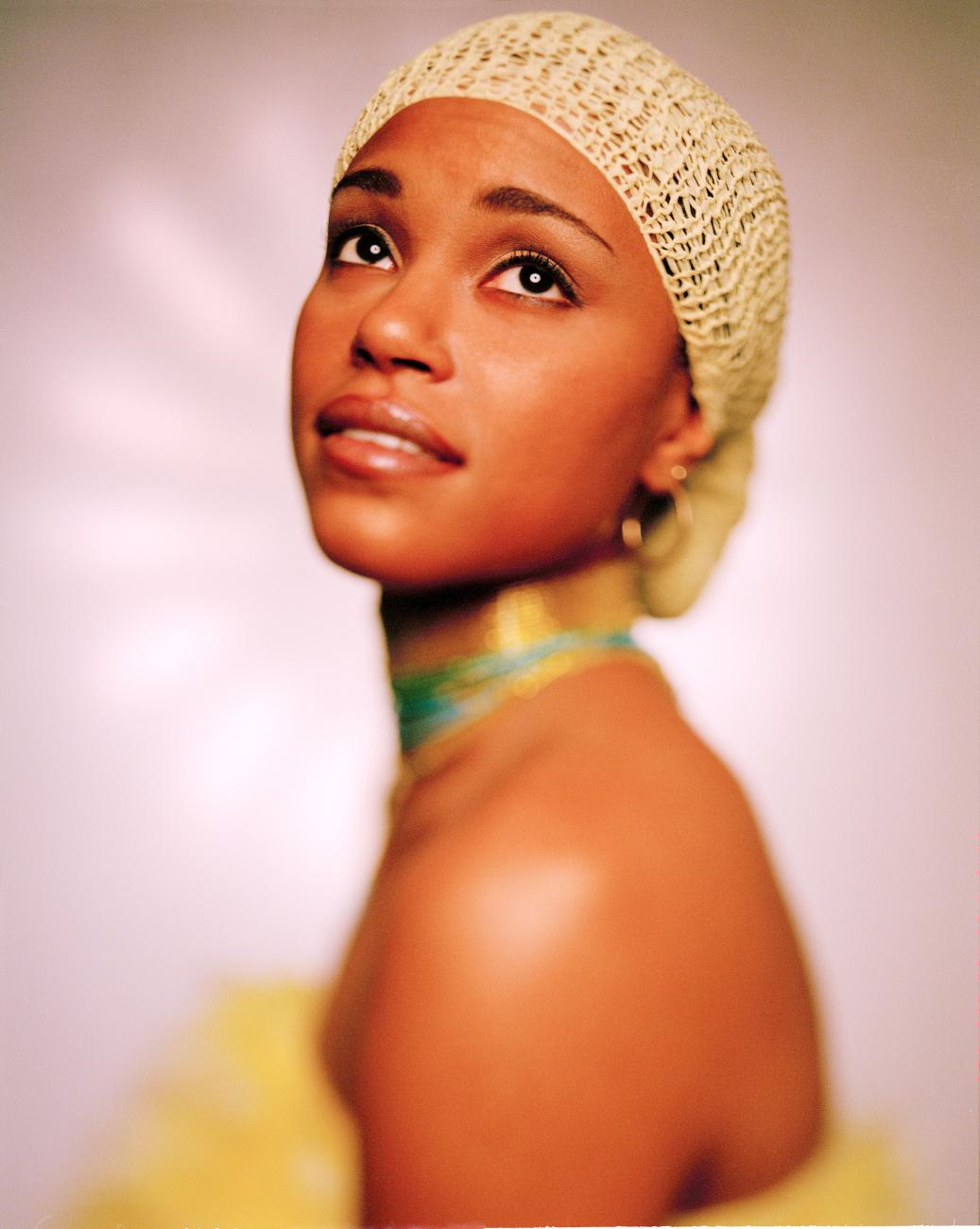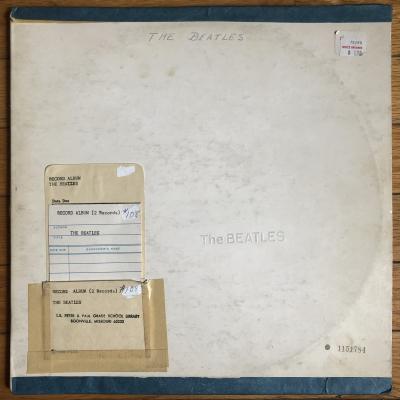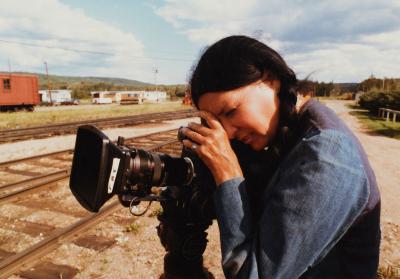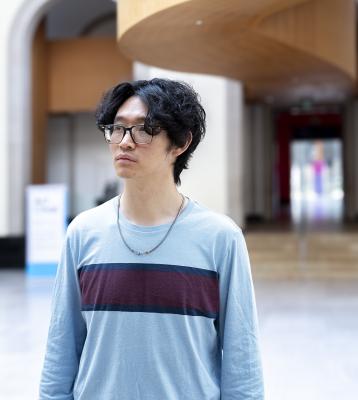Three legendary hip hop moments with Michie Mee
The godmother of Canadian hip hop reflects on her trailblazing career before performing live at the AGO

Patrick Nichols, Michie 2K, 2000. Courtesy of the artist © Patrick Nichols
Michie Mee is the Godmother of Canadian hip hop. Her 1991 debut album Jamaican Funk - Canadian Style garnered the first-ever global recognition for a Canadian woman MC. This seminal project not only jumpstarted her career, but it also communicated to the world that in Toronto, hip hop and Caribbean culture are deeply intertwined. In celebration of the opening of the exhibition The Culture: Hip Hop and Contemporary Art in the 21st Century on Wednesday, December 4, the AGO welcomes the influential artist for an exclusive performance live from Walker Court on Friday, December 6.
Immersing visitors in the world of hip hop through contemporary art and fashion, The Culture: Hip Hop and Contemporary Art in the 21st Century brings together contemporary artists, musicians, designers and stylists to tell the story of hip hop and its global impact on visual culture. Organized for hip hop’s fiftieth anniversary, the exhibition features contemporary art by celebrated artists like Derrick Adams, John Edmonds, Deana Lawson and Hank Willis Thomas. Several works in the exhibition centre the Toronto hip hop scene, including a 2000 portrait of Michie Mee taken by pioneering Canadian music photographer Patrick Nichols.
Born in Kingston, Jamaica, Michie Mee moved to Toronto as a child and began making music in her teen years. After touring widely during the 1990s and cementing her name as a staple of Canadian hip hop, she became a fixture on the screens of MuchMusic. Her acclaimed singles Cover Girl (1998) and Don’t Wanna Be Your Slave (1999) were in heavy rotation on premiere shows like Rap City and Da Mix, earning her both a MuchMusic Video Award and a Juno nomination. In 2000, she was a cast member on the CBC-produced hip hop drama series Drop the Beat, adding lead actress to her list of many achievements. In 2020, Michie Mee released her most recent album, Bhadgyal’s Revenge, which she considers to be the full embodiment of her identity and a message to the world that old-school Canadian hip hop has aged like fine wine.
Before taking the stage at the AGO, Michie Mee shared candid reflections on three key moments in her legendary career.
Jamaican Funk - Canadian Style (1991)
Jamaican Funk was the first single from my debut album, and the first song that we had visuals for. The concept was based on the fact I was living dancehall but writing hip hop. For me, there were no rules. I wanted to reflect who I was. Because I had seen hip hop artists emulating people that went to dancehall parties - Wu-Tang Clan, for example - I knew it was okay to have dancehall style, but there were no women doing that. So, I thought I would bring that to life in Jamaican Funk - Canadian Style.
[The song and music video] let people know that there was a Canadian girl in hip hop that Americans could understand. That album was the first, and one of the only, ever created where one side is all hip hop, and the other side is all dancehall. That hasn't really been done again. It was a template for the early years, when hip hop music was still fresh and expanding. It allowed me to showcase how I was living and what Toronto was about. It tells a story about how West Indians lived in Canada. It really helped me express myself, and it gave me a unique identity.
For the video, there wasn't a big production. It was a lot of people that were from the art world dancing and hanging out. Starr Jacobs created the panels in the back that I stood between, whinin’ my waist in my dancehall clothes. I had feathers sewn onto a jean suit, designed by a local designer Princess Stevenson. Jamaica Funk was a perfect explanation of who I was as an artist. [It was] reflected in my hair, my gold teeth, and in all the whinin’. MuchMusic forced us to re-edit the video because it had so much whinin’ up. I wanted to emulate the dancehall scene, but we couldn’t really do that because it was seen as explicit but by today’s standards, it’s not at all.
After the release of Jamaican Funk - Canadian Style, we toured across Europe, first as a solo act, and then with the Dream Warriors. It was eye opening for me to see how huge hip hop was in places like Sweden, far bigger than it was in Canada at the time. I got introduced to a very wide audience and networked with so many other artists.
Cover Girl and Don’t Wanna Be Your Slave (1998 & 1999)
When Cover Girl and Don’t Wanna Be Your Slave came out, it represented me finding my independence as an artist. It was my Janet Jackson Control moment. When you break free from being a little girl in the game and you’re ready to dress up and put on makeup and adult clothes.
For the Cover Girl video, I flew in two stylists who were working with Busta Rhymes at the time. DJ Clark Kent (1966 - 2024) had introduced me to them. The looks they produced helped me compete with a lot of the hip hop videos getting aired on MTV and BET. We got a small Videofact grant and I covered the rest out of pocket. At this point, hip hop was starting to blow up in Canada and we wanted to make sure the video was on MuchMusic regularly and it was. They started playing Cover Girl in heavy rotation on Rap City, and we ended up winning Best Independent Video at the MuchMusic Video Awards that year. Rap City was so important at that time because we needed an urban show that would bring in the new generation of music.
Cover Girl had also just been licensed to Rap Essentials Vol. 2 [a groundbreaking Canadian hip hop compilation series], which was doing really well. It was helping people gravitate towards hip hop because it gave you so many important Canadian artists at once. Through that success, a lot of the artists ended up getting cast on the television show Drop the Beat on CBC. I was one of the main characters, Divine. The show reflected how we grew up, and the community radio culture of Toronto hip hop, specifically 88.1 CKLN, 89.5 CIUT and 105.5 CHRY. I happened to be working at CKLN at the time hosting a show with DJ X, so it all just aligned perfectly for me. We were all doing everything we could to make it as independent artists.
Bhadgyal’s Revenge (2020)
With Bhad Gyal’s Revenge, I completely found my independence. I knew exactly what I wanted to say, who I was speaking to, and when I wanted to release music. I knew I had survived and made it past anything blocking me.
The visual world of this album was a play on Roxanne Shante’s classic album Roxanne’s Revenge. I wanted to bring back the whole aesthetic of old-school hip hop. It was a good way for me to bring a mature energy to hip hop’s rebellious roots. There was bhad gyal Ce-cile and bhad gyal Riri, and I was ready for my bhad gyal moment. I found my voice and I was in control of it.
I reached out to whom I thought were the best producers in Toronto, people who could help bring my identity to life, from hardcore hip hop to dancehall. I really took my time and when I was ready to wrap it up, I added three final songs. I wanted one song to be with a reggae artist, so I collaborated with Tonya P. I wanted another song to be with an R&B singer, so I collaborated with Xentury. I did another song where I sang and rapped, completing the whole song on my own, like a Lauryn Hill vibe but still very grounded. I pulled all my resources and relationships together to create this album from production to photographers, stylists and videographers.
Another important evolution for me was that I now had dreadlocks. While my coloured hair in the Cover Girl video referenced dancehall culture, my locs represented Rastafarianism. This was important for me because I'm a Jamaican with Maroon ancestry. During a photoshoot at the time, I wore a chain with an Africa pendant. I always knew who I was and what my roots are.
This album was my way of preserving the culture and letting fans know that women in hip hop in Canada grow up and mature. In rock and roll and jazz, the artists don’t go away. I wanted to remind people that hip hop is no different, we can keep going.
Don’t miss Michie live at the AGO on Friday December 6, at the public opening of The Culture: Hip Hop and Contemporary Art in the 21st Century. Book your tickets here.
The Culture: Hip Hop and Contemporary Art in the 21st Century opens on Level 5 of the AGO on Wednesday, December 4. The exhibition is co-curated by Asma Naeem, the Baltimore Museum of Art (BMA)’s Dorothy Wagner Wallis Director; Gamynne Guillotte, the BMA’s Chief Education Officer; Hannah Klemm, Saint Louis Art Museum (SLAM)’s Associate Curator of Modern and Contemporary Art; and Andréa Purnell, SLAM’s Audience Development Manager. The AGO presentation is organized by Julie Crooks, Curator, Arts of Global Africa and the Diaspora, AGO.









































